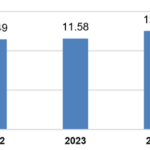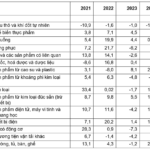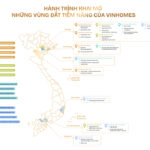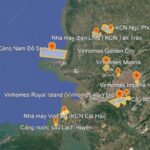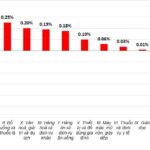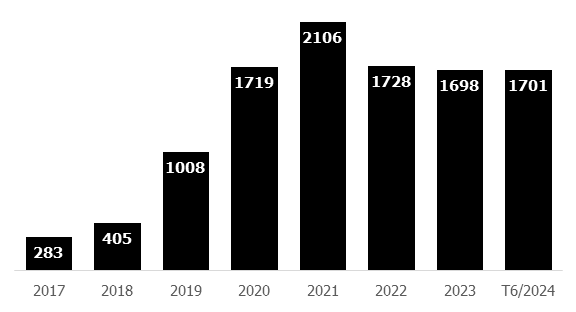The Ministry of Agriculture and Environment is in the process of drafting and finalizing a decision for the Prime Minister’s approval on the issuance of criteria to identify investment projects and tasks related to climate change adaptation. The Ministry aims to submit the draft decision to the Prime Minister in August 2025.
According to the updated Nationally Determined Contribution (NDC) report, government resources can only meet 30% of the adaptation needs. With the ever-increasing investment demands, the challenge lies in setting criteria for climate change adaptation projects, focusing on vulnerable sectors and locations.
Climate change adaptation, along with greenhouse gas emissions reduction, forms the two pillars of climate change response. Studies indicate that extreme climate-related damages in Vietnam amount to approximately 1.5% of GDP annually.
As per the Law on Environmental Protection, the Ministry of Natural Resources and Environment (now the Ministry of Agriculture and Environment) is entrusted with formulating and submitting to the Prime Minister for approval, the criteria for identifying investment projects and tasks related to climate change adaptation that fall under the Prime Minister’s approval authority.
These criteria will contribute to refining policies related to climate change adaptation and public investment. They will also aid ministries, sectors, and localities in clearly understanding the correlation between projects and adaptation goals, thus enabling the selection of focused project proposals.
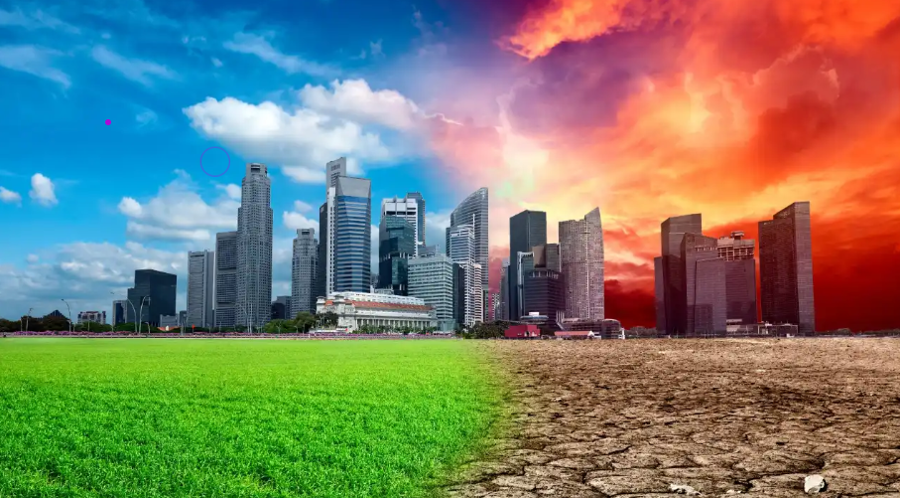
At a recent consultation workshop on the draft decision, the Climate Change Bureau highlighted that climate change response comprises two main pillars: greenhouse gas emissions reduction and climate change adaptation. While emission reduction projects have well-defined criteria, adaptation projects lack a comprehensive set of criteria, despite being mentioned in some regulations.
Accurate identification of adaptation projects is crucial for effective resource mobilization and ensuring proper utilization of funds.
The Ministry of Agriculture and Environment has been working in collaboration with relevant agencies and experts to examine the scientific and practical basis, reviewing the provisions of the 2020 Law on Environmental Protection, the 2024 Law on Public Investment, the 2020 Law on Investment, the Law Amending and Supplementing a Number of Articles of the Laws on Planning, Investment, Public-Private Partnership Investment, and Bidding, and the 2024 Law on Investment.
By studying and reviewing the issued criteria along with relevant laws and legal documents, the Ministry aims to develop feasible and practical criteria for tasks and projects related to climate change adaptation.
The draft decision on criteria for identifying investment projects and tasks related to climate change adaptation under the Prime Minister’s authority will be based on the content of the pre-feasibility study reports proposing investment policies for projects under the Prime Minister’s approval authority.
Unlike the initial draft with numerous criteria, this revised draft proposes only six criteria for identifying investment projects adapting to climate change: investment necessity, project objectives, implementation location, activities, sustainability, and socio-economic efficiency.
According to the draft decision, the six fields or groups of investment projects related to climate change adaptation include: projects on irrigation and disaster prevention; projects on agricultural, forestry, and aquatic production to enhance resilience to extreme weather and adapt to climate change; projects on the construction and restoration of national parks and nature reserves to address climate change and sea-level rise; transportation projects to enhance resilience and mitigate negative impacts of climate change; projects on housing and urban infrastructure to adapt to climate change and sea-level rise; and projects on healthcare, culture, sports, and tourism to improve climate change resilience.
Industrial Production Grows by 8.6%: Manufacturing and Processing Sectors Lead the Way.
The industrial production landscape for the first seven months of 2025 has been a positive story, with a standout performance from the manufacturing sector, which saw a notable 10.3% increase. This sector has once again proven to be the driving force behind the overall industry’s growth.
The Great Migration and the Rise of Satellite Megacities
The urban landscape is undergoing a significant shift, with a wave of expansion that is fueling the rise of satellite megacities. These emerging urban centers offer a unique blend of ecological living spaces, world-class amenities, and strong potential for long-term growth, setting a new standard for modern urban development.
How Tycoon Pham Nhat Vuong Is Taking Over Hai Phong With His $2.2 Billion Real Estate, Industrial, and Logistics Projects
With an estimated investment of nearly $22 billion, Vingroup is the largest private investor in Hai Phong, spanning across real estate, industry, energy, and infrastructure sectors. The group has significantly contributed to the city’s goal of becoming the economic center of the northern sea, with its diverse range of projects and developments.
July CPI Rises 0.11% Month-Over-Month
According to the latest data released by the Statistics Bureau, the consumer price index (CPI) rose 0.11% in July from the previous month, primarily due to increases in housing maintenance material prices, food prices, and dining out. The CPI for July increased by 2.13% compared to December 2024, and by 3.19% year-on-year. On average, in the first seven months of 2025, the CPI rose by 3.26% year-on-year, with core inflation up by 3.18%.


























